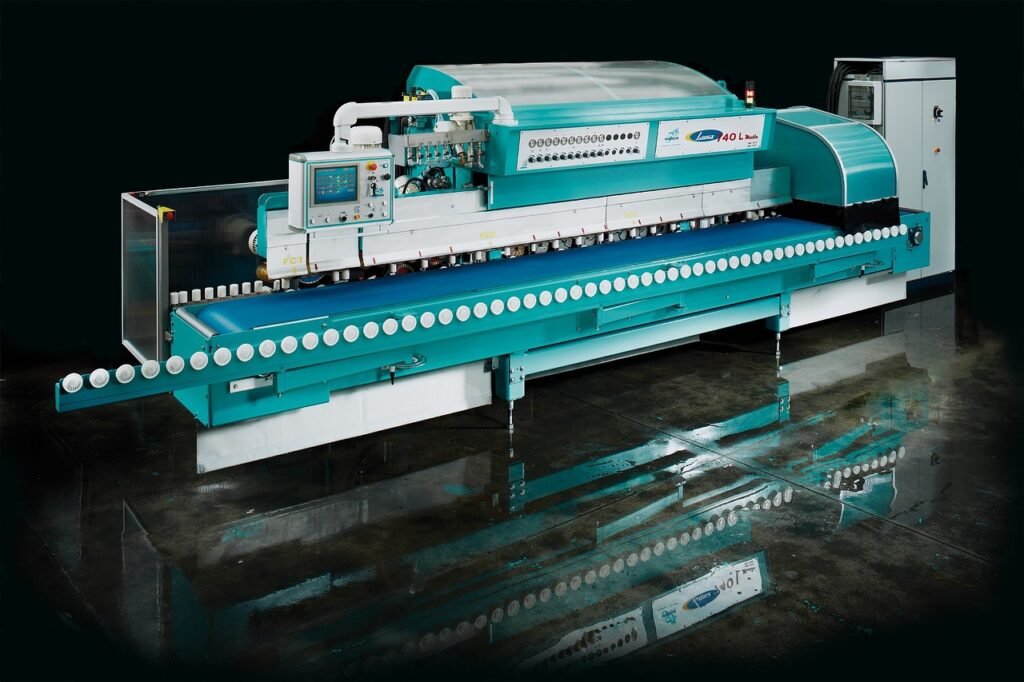What Is Mobile Edge Computing? A Complete Comprehensive guide

In the ever-evolving landscape of technology, Mobile Edge Computing (MEC) is emerging as a pivotal innovation that is revolutionizing how data is processed and delivered to end users. As industries and consumers demand faster, more reliable, and more efficient services, MEC is playing a crucial role in meeting these needs. This comprehensive guide delves into the intricacies of Mobile Edge Computing, exploring its significance, applications, and future potential.
Understanding Mobile Edge Computing
Mobile Edge Computing (MEC) refers to the deployment of computing resources and services at the edge of a mobile network, closer to the end users. Unlike traditional cloud computing, where data is processed in centralized data centers often located far from the user, MEC brings computation and storage closer to the user. This proximity reduces latency, enhances data security, and improves overall user experience.
Key Components of Mobile Edge Computing
- Edge Nodes: These are the physical or virtual servers located at the edge of the network. Edge nodes handle data processing tasks that would otherwise be performed in centralized cloud data centers. By processing data closer to the source, edge nodes minimize latency and provide faster responses.
- User Equipment (UE): In MEC, user devices such as smartphones, IoT devices, and sensors interact directly with edge nodes. The closer proximity to computing resources allows these devices to operate more efficiently, with reduced reliance on distant cloud servers.
- Mobile Network Operators (MNOs): MNOs play a vital role in MEC by providing the infrastructure and network connectivity required to support edge computing. They manage the distribution of resources and ensure seamless communication between edge nodes and user devices.
- Edge Orchestrator: This component manages the resources and services deployed at the edge. It ensures optimal allocation of resources, load balancing, and service continuity, even in dynamic and high-demand environments.
Benefits of Mobile Edge Computing
- Reduced Latency: One of the most significant advantages of MEC is its ability to drastically reduce latency. By processing data closer to the user, MEC eliminates the need for data to travel long distances to centralized servers, resulting in faster response times.
- Enhanced Security: MEC improves data security by keeping sensitive information closer to the source. Data does not have to traverse through multiple networks and data centers, reducing the risk of interception or unauthorized access.
- Improved User Experience: With reduced latency and enhanced reliability, MEC significantly improves the user experience. Applications that require real-time processing, such as augmented reality (AR), virtual reality (VR), and online gaming, benefit immensely from MEC.
- Efficient Network Usage: This reduces congestion in the core network and improves overall network efficiency.
- Scalability and Flexibility: MEC allows for scalable and flexible deployment of services. As user demand grows, additional edge nodes can be deployed to meet the increased demand without overloading the central network.

Applications of Mobile Edge Computing
- IoT and Smart Cities: In smart cities, MEC enables real-time data processing from a multitude of IoT devices, such as traffic cameras, environmental sensors, and smart meters. This real-time analysis helps in making quick decisions, such as optimizing traffic flow or responding to emergencies.
- Autonomous Vehicles: MEC plays a critical role in the development of autonomous vehicles by providing low-latency communication between vehicles and edge nodes. This is crucial for real-time decision-making, such as collision avoidance and route optimization.
- Augmented Reality (AR) and Virtual Reality (VR): AR and VR applications require high bandwidth and low latency to deliver seamless experiences. MEC ensures that the necessary computing power is available at the edge, allowing for smooth and immersive AR/VR experiences.
- Healthcare: In healthcare, MEC supports telemedicine, remote patient monitoring, and real-time data analysis.
- Retail: Retailers are leveraging MEC to enhance the in-store experience through personalized promotions, real-time inventory management, and seamless payment processing. MEC enables quick data processing, allowing retailers to respond swiftly to customer needs.
Challenges and Considerations in Implementing MEC
- Infrastructure Costs: Deploying edge nodes across a wide area can be expensive, particularly in regions with limited existing infrastructure. Companies must carefully consider the costs involved in deploying and maintaining MEC infrastructure.
- Interoperability: Ensuring seamless interoperability between different edge nodes, user devices, and cloud services can be challenging. Standards and protocols need to be established to ensure consistent communication and data exchange.
- Security Concerns: While MEC can enhance security by keeping data closer to the user, it also introduces new security challenges. Edge nodes could become targets for cyberattacks, requiring robust security measures to protect sensitive data.
- Resource Management: Efficiently managing resources at the edge is crucial for the success of MEC. This includes load balancing, resource allocation, and ensuring service continuity in the event of network congestion or hardware failures.
- Regulatory Compliance: Different regions have varying regulations regarding data processing and storage. Companies must ensure that their MEC deployments comply with local laws and regulations, particularly regarding data privacy and security.
The Future of Mobile Edge Computing
The future of MEC is promising, with continued advancements in 5G technology, AI, and IoT. As these technologies evolve, MEC will become even more integral to delivering high-performance, low-latency services across various industries. We anticipate a surge in MEC deployments, particularly in sectors such as autonomous vehicles, healthcare, and smart cities, where real-time data processing is critical.
5G and MEC: The rollout of 5G networks will further enhance the capabilities of MEC. With higher bandwidth and lower latency, 5G will enable more complex and data-intensive applications to be processed at the edge, opening up new possibilities for innovation.
AI and MEC: The integration of AI with MEC will enable more intelligent and adaptive edge computing. AI algorithms can be deployed at the edge to analyze data in real time, making autonomous decisions and reducing the need for human intervention.
IoT and MEC: As the number of IoT devices continues to grow, MEC will become essential in managing the massive amounts of data generated by these devices. MEC will enable real-time data analysis, allowing for quicker responses to changing conditions in various environments.Certainly! Let’s dive deeper into the potential advancements and broader impact of Mobile Edge Computing (MEC) in the evolving tech ecosystem.
How MEC is Revolutionizing Industries
As Mobile Edge Computing continues to gain traction, its impact is being felt across various industries. Let’s explore how MEC is transforming these sectors and what the future holds.
Telecommunications
In the telecommunications industry, MEC is a game-changer. By integrating edge computing capabilities directly into the mobile network infrastructure, telecom providers can offer enhanced services such as real-time analytics, network optimization, and low-latency streaming. MEC allows telecom companies to offer differentiated services to customers, such as faster content delivery and more reliable connections, thereby improving customer satisfaction and reducing churn.
Moreover, as telecom operators expand their 5G networks, MEC will be instrumental in enabling the ultra-reliable low-latency communication (URLLC) required for critical applications, such as remote surgery and industrial automation. This will pave the way for new revenue streams and business models within the telecom industry.

Manufacturing and Industry 4.0
The manufacturing sector, particularly under the umbrella of Industry 4.0, stands to benefit immensely from MEC. By processing data at the edge, manufacturers can achieve real-time monitoring and control of industrial processes, reducing downtime and increasing efficiency. Predictive maintenance becomes more effective with MEC, as data from sensors and machines can be analyzed instantly, predicting failures before they occur and minimizing disruptions.
Additionally, MEC supports advanced robotics and automation by providing the low-latency communication required for real-time decision-making. This enables more sophisticated and autonomous operations on the factory floor, driving productivity and innovation.
Entertainment and Media
The entertainment and media industry is also being reshaped by MEC. With the rise of streaming services, online gaming, and interactive content, there is a growing demand for high-quality, low-latency content delivery. MEC enables content providers to cache and process content closer to users, reducing buffering times and improving the overall viewing experience.
In gaming, especially in cloud gaming and eSports, MEC provides the necessary infrastructure to deliver seamless, lag-free gameplay. This not only enhances the user experience but also allows for more complex and resource-intensive games to be played on devices with minimal processing power.
Finance and Banking
In the finance and banking sectors, MEC is transforming how transactions are processed and how services are delivered to customers. With MEC, financial institutions can offer real-time fraud detection and risk management by processing data at the edge, closer to the source of transactions. This reduces the time required to detect and respond to fraudulent activities, enhancing security and trust in financial systems.
Moreover, mobile banking and payment services benefit from MEC by offering faster transaction processing and improved customer experience. By reducing latency, MEC allows for quicker transaction confirmations and real-time account updates, which are crucial in the fast-paced financial world.
Potential Challenges and Mitigation Strategies
While MEC offers numerous benefits, its deployment and operation come with challenges that need to be addressed for its widespread adoption.

Scalability Issues
One of the primary challenges in MEC deployment is scalability. To mitigate this, companies can adopt automated orchestration tools and AI-driven resource management systems that can dynamically allocate resources based on demand, ensuring efficient and scalable MEC deployments.
Data Privacy and Compliance
Data privacy is a significant concern in MEC, especially when processing sensitive information at the edge. To address this, organizations must implement robust encryption techniques, secure communication protocols, and data anonymization strategies to protect user data. Additionally, adherence to regulatory compliance standards, such as GDPR, is crucial in ensuring that data processing at the edge meets legal requirements.
Interoperability Challenges
Ensuring interoperability between different MEC platforms, devices, and cloud services is essential for a seamless user experience. Companies can overcome this challenge by adopting open standards and APIs that facilitate integration across various systems. Collaborative efforts among industry players to develop standardized protocols can also play a significant role in improving interoperability.
Energy Consumption
The deployment of numerous edge nodes can lead to increased energy consumption, which is a concern from both an operational cost and environmental perspective. To mitigate this, companies can invest in energy-efficient hardware and software optimization techniques that reduce the power consumption of edge devices. Additionally, integrating renewable energy sources into MEC deployments can help in minimizing the environmental impact.
Emerging Trends and Innovations in Mobile Edge Computing
The field of Mobile Edge Computing is rapidly evolving, with several emerging trends and innovations poised to shape its future.
AI at the Edge
The integration of Artificial Intelligence (AI) at the edge is one of the most exciting trends in MEC. By deploying AI algorithms on edge devices, companies can enable real-time data analysis, machine learning (ML) model training, and autonomous decision-making at the edge. This reduces the need for constant communication with central cloud servers, enhancing the speed and efficiency of AI-driven applications.
Edge Cloud Hybrid Models
Another emerging trend is the development of edge-cloud hybrid models, where edge computing resources are seamlessly integrated with central cloud services.
5G and Beyond
The deployment of 5G networks is expected to further accelerate the adoption of MEC, but the potential of MEC goes beyond 5G. Research is already underway on 6G networks, offering even higher speeds, lower latency, and more extensive connectivity. These advancements will open up new possibilities for MEC, enabling more complex and data-intensive applications to be processed at the edge.

Blockchain Integration
The integration of blockchain technology with MEC is another area of exploration. Blockchain can provide a decentralized and secure method for managing transactions and data at the edge, enhancing security and trust. This integration could be particularly beneficial in sectors like finance, supply chain, and IoT, where data integrity and security are paramount.
How Businesses Can Leverage Mobile Edge Computing
As businesses increasingly recognize the value of Mobile Edge Computing, they are exploring ways to integrate MEC into their operations to gain a competitive edge. Here’s how different sectors can harness the power of MEC to optimize their services and innovate their offerings.
Enhancing Customer Experience
Businesses across industries can use MEC to improve the customer experience by providing faster, more reliable services. For instance, retailers can leverage MEC to offer personalized shopping experiences through real-time data processing. By analyzing customer behavior at the edge, retailers can deliver tailored promotions, improve in-store navigation, and optimize inventory management. Similarly, financial institutions can use MEC to deliver faster transaction processing and real-time account updates, enhancing customer satisfaction and loyalty.
Optimizing Operations
MEC enables businesses to optimize their operations by bringing computation closer to where data is generated. Manufacturers can benefit from real-time monitoring and predictive maintenance, which reduce downtime and enhance productivity. By processing data at the edge, manufacturers can quickly respond to equipment failures or production issues, minimizing disruptions and maintaining operational efficiency.
In the logistics and supply chain sector, MEC can improve real-time tracking and inventory management. By processing data from IoT sensors at the edge, companies can gain instant insights into the location and condition of goods, allowing for more efficient route planning and inventory control.
Supporting Innovation and New Business Models
MEC opens up opportunities for businesses to explore innovative applications and new business models. For example, telecommunications companies can offer edge-based services such as enhanced video streaming, cloud gaming, and AR/VR experiences. These services can be monetized as premium offerings, providing new revenue streams for telecom operators.
In the healthcare industry, MEC can enable remote patient monitoring and telemedicine services, providing healthcare providers with real-time data to make informed decisions. This not only improves patient outcomes but also allows for the development of new healthcare delivery models, such as home-based care and virtual consultations.

Reducing Costs and Increasing Efficiency
By processing data at the edge, businesses can reduce the load on their central cloud infrastructure, leading to cost savings. MEC allows for efficient data processing and storage, reducing the need for expensive, centralized data centers. Additionally, MEC can help businesses optimize their network usage, reducing bandwidth costs and improving overall network efficiency.
For example, content delivery networks (CDNs) can use MEC to cache popular content at the edge, reducing the need for data to travel across long distances. This not only speeds up content delivery but also reduces the costs associated with data transmission.
The Role of Mobile Edge Computing in Emerging Technologies
As emerging technologies continue to develop, MEC will play a crucial role in their adoption and success. Let’s explore how MEC intersects with some of the most promising technologies of the future.
Internet of Things (IoT)
The Internet of Things (IoT) is one of the primary beneficiaries of MEC. With billions of IoT devices generating massive amounts of data, MEC is essential for processing this data in real-time. By bringing computation closer to the source, MEC enables faster decision-making and real-time insights, which are critical for IoT applications such as smart cities, industrial automation, and connected vehicles.
For example, in a smart city environment, MEC can process data from traffic sensors, environmental monitors, and surveillance cameras at the edge, enabling real-time traffic management, pollution control, and public safety measures. This not only improves the quality of life for residents but also reduces the strain on centralized cloud resources.
Artificial Intelligence (AI) and Machine Learning (ML)
MEC is set to accelerate the adoption of Artificial Intelligence (AI) and Machine Learning (ML) at the edge. By deploying AI models at the edge, businesses can process data locally, enabling real-time analytics and autonomous decision-making. This is particularly important for applications that require immediate responses, such as autonomous vehicles, robotics, and real-time video analysis.
For instance, autonomous vehicles rely on AI algorithms to process data from sensors and cameras in real-time. MEC allows these vehicles to make split-second decisions, such as detecting obstacles or navigating through traffic, without the latency associated with sending data to a central cloud server.
5G and Beyond
The deployment of 5G networks is closely tied to the success of MEC. With its high bandwidth, low latency, and massive connectivity, 5G provides the ideal infrastructure for MEC. As 5G networks continue to expand, MEC will enable a wide range of new applications and services that were previously not possible.
For example, smart factories can use MEC and 5G to enable real-time control of machinery and automated quality checks, resulting in higher efficiency and reduced production costs. Similarly, smart cities can leverage MEC and 5G to enable real-time traffic management, emergency response, and environmental monitoring.
Strategic Considerations for Implementing Mobile Edge Computing
For businesses looking to implement MEC, there are several strategic considerations to keep in mind to ensure a successful deployment.

Identifying Use Cases
The first step in implementing MEC is to identify the use cases that will benefit the most from edge computing. Businesses should assess their operations to determine where low latency, real-time processing, and data security are most critical. By focusing on high-impact use cases, businesses can maximize the return on investment in MEC infrastructure.
Frequently Asked Questions (FAQs) about Mobile Edge Computing (MEC)
1. What is Mobile Edge Computing (MEC)?
Mobile Edge Computing (MEC) is a network architecture concept that brings computing capabilities and data storage closer to the location where it is needed, specifically at the edge of the network. This reduces latency, enhances the speed of data processing, and allows for real-time applications, making it ideal for scenarios that require quick response times, such as IoT, autonomous vehicles, and smart cities.
2. How does MEC differ from cloud computing?
While cloud computing involves processing data in centralized data centers, often located far from the user or device, MEC processes data closer to the data source or end-user, at the edge of the network. MEC is particularly useful for applications where immediate data processing is critical, whereas cloud computing is better suited for tasks that can tolerate some delay.
3. What are the key benefits of Mobile Edge Computing?
The key benefits of MEC include:
- Reduced Latency: By processing data closer to the user, MEC minimizes the time it takes for data to travel, resulting in faster response times.
- Improved Bandwidth Efficiency: MEC reduces the amount of data that needs to be sent to central servers, conserving bandwidth.
- Enhanced Security and Privacy: Data can be processed locally, reducing the risks associated with transmitting sensitive information over long distances.
- Support for Real-Time Applications: MEC enables applications that require real-time processing, such as augmented reality (AR), virtual reality (VR), and autonomous driving.
4. Which industries benefit most from MEC?
Several industries benefit significantly from MEC, including:
- Telecommunications: Improves network performance and enables new services like real-time analytics and low-latency streaming.
- Manufacturing: Facilitates real-time monitoring and predictive maintenance in Industry 4.0 environments.
- Entertainment and Media: Enhances the quality and speed of content delivery, especially for streaming and gaming.
- Healthcare: Supports telemedicine and remote patient monitoring with real-time data processing.
- Finance: Enables faster and more secure financial transactions and real-time fraud detection.

5. How does MEC enhance the performance of 5G networks?
MEC is a crucial component of 5G networks, as it supports the low-latency and high-bandwidth requirements of 5G. By processing data at the edge, MEC reduces the distance that data needs to travel, ensuring faster and more reliable communication.
6. What are the challenges associated with deploying MEC?
The deployment of MEC comes with several challenges, including:
- Scalability: Managing and scaling edge nodes as demand increases can be complex.
- Interoperability: Ensuring that different MEC platforms, devices, and services work together seamlessly.
- Security and Privacy: Protecting sensitive data processed at the edge and ensuring compliance with regulations.
- Energy Consumption: Managing the energy use of multiple edge devices to maintain cost efficiency and sustainability.
7. Can MEC work with existing cloud computing infrastructure?
Yes, MEC can complement existing cloud computing infrastructure through edge-cloud hybrid models. In these models, data is processed at the edge for real-time tasks while more complex processing and storage are handled in the cloud. This hybrid approach allows businesses to leverage the strengths of both MEC and cloud computing, optimizing performance, scalability, and cost.
8. What role does AI play in Mobile Edge Computing?
Artificial Intelligence (AI) plays a significant role in MEC by enabling real-time analytics and autonomous decision-making at the edge. AI algorithms can be deployed on edge devices to analyze data locally, reducing the need for constant communication with central servers. This is particularly valuable for applications like predictive maintenance, real-time video analysis, and smart manufacturing, where immediate insights and actions are required.
9. How is MEC important for the Internet of Things (IoT)?
MEC is critical for the Internet of Things (IoT) as it enables real-time data processing and decision-making at the edge, where IoT devices generate massive amounts of data. By processing data locally, MEC reduces latency, conserves bandwidth, and improves the efficiency and effectiveness of IoT applications. This is especially important for smart cities, industrial IoT, and connected vehicles, where real-time responses are essential.
10. What does the future hold for Mobile Edge Computing?
The future of MEC is promising, with advancements in 5G and beyond, integration with AI, and the development of decentralized computing models. new applications and services that leverage the low-latency, high-speed, and real-time capabilities of edge computing. The continuous evolution of networks, including the eventual rollout of 6G, will further enhance the potential of MEC, driving innovation and digital transformation across industries.
Complete List of Games Available on Xbox Cloud Gaming (xCloud)




